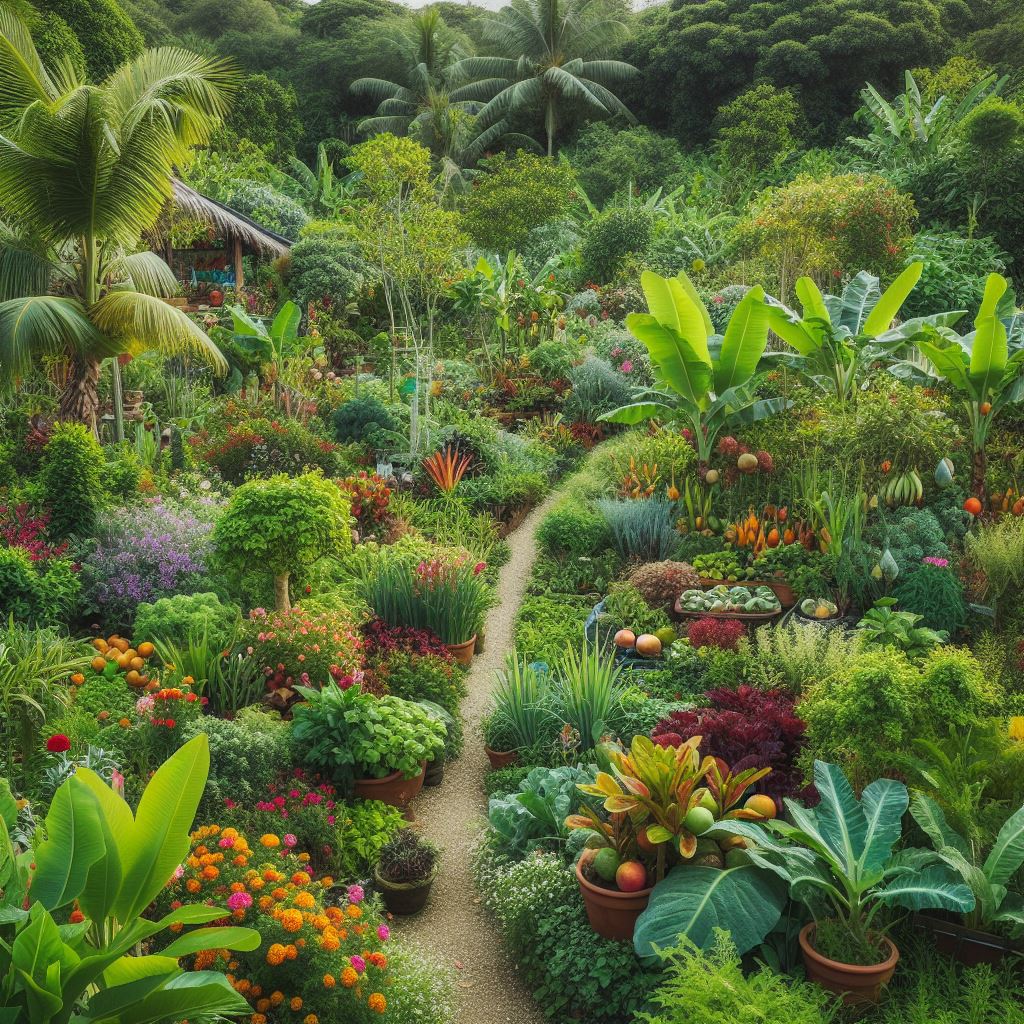In a world striving for sustainability and harmony with nature, permaculture emerges as a guiding principle, offering a holistic approach to designing human settlements and agricultural systems. But what exactly is permaculture?
Understanding Permaculture: Permaculture, derived from “permanent agriculture” or “permanent culture,” is a design system that mimics the patterns and relationships found in natural ecosystems to create regenerative and self-sustaining environments. It emphasizes principles such as observation, integration, diversity, and resilience to develop systems that meet human needs while regenerating the land and fostering biodiversity.
Exploring Tropical Permaculture Forests: Now, envision a lush, biodiverse landscape teeming with life—a tropical permaculture forest. Unlike traditional monoculture plantations, these forests mimic the structure and function of natural ecosystems, comprising layers of vegetation, from towering canopy trees to sprawling ground covers. In this vibrant ecosystem, a plethora of tropical fruit trees, melons, and vegetables thrive, creating a haven of abundance and diversity.
Tropical Fruits and Vegetables: Within the embrace of a tropical permaculture forest, a cornucopia of delectable fruits awaits. Picture the succulent sweetness of mangoes, creamy richness of avocados, and tangy burst of citrus fruits. Add to this melons like luscious watermelons and refreshing cantaloupes, alongside an array of vegetables perfectly suited to the tropical climate—cucumbers, zucchini, sweet potatoes, and more.
Transitioning to a Beneficial Paradise: But the journey into tropical permaculture forests extends beyond mere cultivation—it’s about transformation. Through thoughtful design and patient stewardship, we gradually transition the surrounding jungle into an abundant landscape brimming with beneficial plants. We replace invasive species with native fruit trees, introduce nitrogen-fixing plants to enhance soil fertility, and create habitats for pollinators and beneficial insects.
Conclusion: In embracing permaculture principles, we embark on a journey of co-creation with nature, where every plant serves a purpose, every element supports another, and abundance flourishes. Together, let us cultivate tropical permaculture forests—a harmonious blend of beauty and sustenance, a testament to the regenerative power of ecological design.
As we nurture these forests, we not only cultivate food for our bodies but also nourishment for our souls—a reminder of our interconnectedness with the natural world and our capacity to create abundance through cooperation and respect.


